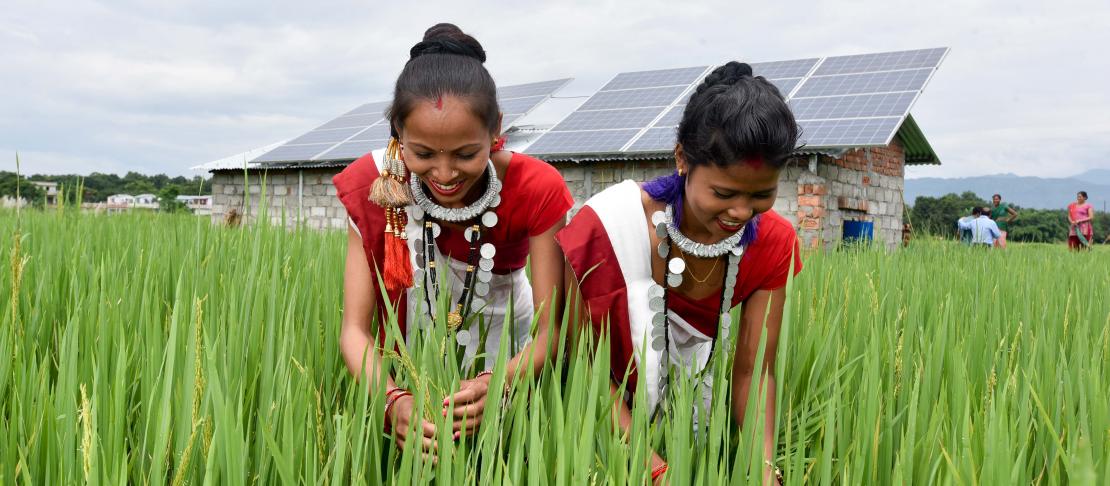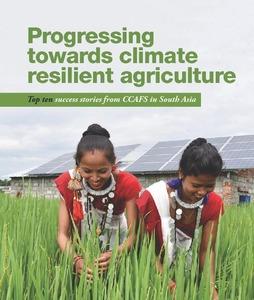Building climate-resilient agriculture systems in South Asia: top ten success stories

Stories portray how agriculture can be transformed to become resilient, productive and climate-savvy
Climate change impact on agriculture systems and consequently food security has been quite vivid in the South Asian region. Notwithstanding the fact that the response to such challenges through a wide range of means and methods have led to improvements, the region is still far from the last mile in its run towards climate resilience.
The CGIAR Research Program on Climate Change, Agriculture and Food Security (CCAFS) has been active in the region since 2010 and, through a strong network of CGIAR and other local and national partners, has been engaging in research and extension activities to build climate-resilient agriculture systems. Its research and related activities in conjunction with its partners have led to some successful outcomes while some remain in the pipelines for the same.
A new publication titled ‘Progressing towards climate-resilient agriculture; top ten success stories from CCAFS in South Asia’ captures a wide spectrum of stories within the domains of climate change, agriculture and food security. One of the key highlights is the use of the Climate-Smart Village AR4D approach to identify models of climate-smart agriculture (CSA) portfolios which have been brought to scale by several state governments in India, and also by the Nepal government. This approach continues to proliferate through innovative models and practices such as the farmer-led solar pump irrigation cooperative in the Gujarat state of India, deployment of precision nitrogen sensors, among others, which has been elaborated upon in this publication.

Progressing towards climate-resilient agriculture: top ten success stories from CCAFS in South Asia
In this publication, strong emphasis has been laid on the highly crucial role played by policies and institutions in ensuring uptake of research and thereby translating them into pragmatic and contextualized solutions. The research on interactive scenarios and policy analysis for agricultural development and food security (Bangladesh) and agroforestry policy (India) has been included while highlighting the uptake of the former in the National Adaptation Plans of Bangladesh and the latter as the first such comprehensive policy in the world.
More from the top ten stories include CCAFS work with regards to agriculture insurance and how its research has made significant contributions towards improving the risk transfer mechanism which has traditionally suffered due to faulty designs. As a consequence, ingenious and more efficient models for determining triggers in weather index insurance had to be developed. How this has been arrived at, leading to a win-win insurance product for farmers, industry as well as government, has been explained in one of the chapters.
From the larger arena of food security monitoring, one of the success stories talks about how the Nepal government is being effectively aided in its efforts towards regular monitoring and assessment of its food security through CCAFS knowledge products.
The top ten success stories segment also consists of evidence on floodwater management and the development of low emission pathways in agriculture in the region. For the former, the Underground Taming of Floods for Irrigation technology has been designed which operates on a dual mitigation principle of diverting excess water during floods and recharging ground water through village ponds/small dams. In case of low emission pathways, the evidence built around adaptation and mitigation benefits of the Alternate Wetting and Drying (AWD) technology in rice cultivation, encouraged the government of Bangladesh to promote it for wide-scale adaptation across the country.
Apart from a more detailed discussion on the topmost successes from the region, the publication brings to the fore other emerging stories which are expected to lead to successful and established outcomes in the future. The themes covered under this segment include food security bill, precision land levelling, public-private partnerships, citizen science approach, gender mainstreaming in policy, capacity development, flood-mapping, loss assessment, germplasm conservation and expanding private sector engagement to scale climate-smart agriculture. Through short excerpts on the aforesaid topics, an attempt has been made to call attention to some significant advances such as India’s Food Security Bill that promotes climate-resilient course grain cultivation, the development of real time flood monitoring to support the design of flood insurance, development of a regional database of germplasm conservation, among others. More importantly, focus has been laid on gender mainstreaming in policy-making in the food security domain especially in Nepal, while also shedding light on the capacity development initiatives undertaken by CCAFS along with partners for ensuring climate resilience among women farmers in the region.
This publication was launched during the CGIAR-CCAFS Consultation with national partners held on the 11 September in New-Delhi, India, to chart out the future course of CGIAR research in the region.
Download the publication: CCAFS. 2017. Progressing towards climate resilient agriculture; top ten success stories from CCAFS in South Asia. CGIAR Research Program on Climate Change, Agriculture and Food Security (CCAFS) of South Asia, New Delhi, India.
Shehnab Sahin is the Communications Specialist at CCAFS South Asia.



